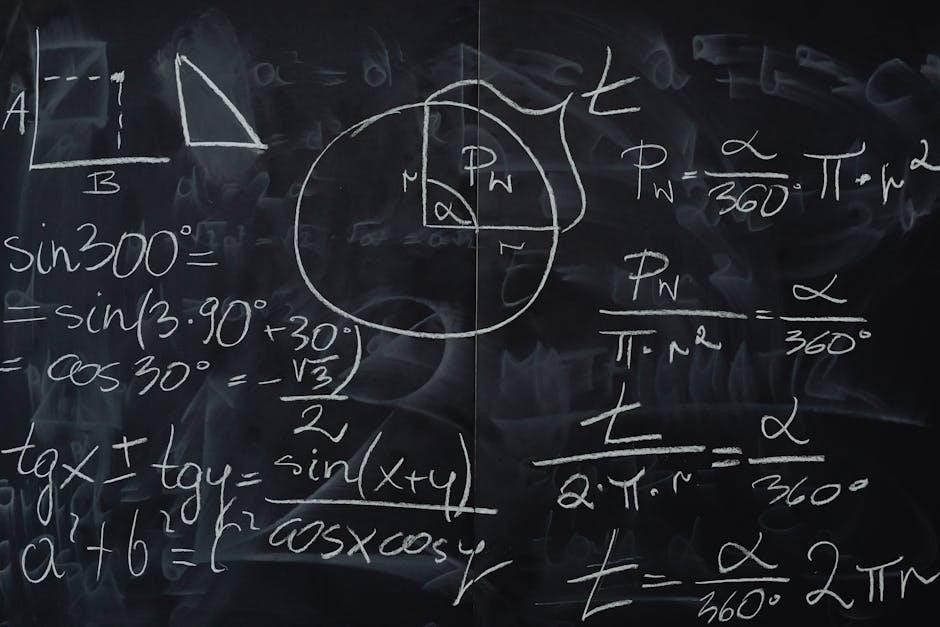
Solving Equations with Variables on Both Sides: A Comprehensive Guide
This guide provides a comprehensive approach to solving equations where variables appear on both sides. It covers fundamental principles, step-by-step instructions, and practical techniques to master this essential algebraic skill. Practice problems and real-world applications will be included.
Solving equations is a core skill in algebra, and it becomes particularly interesting when variables appear on both sides of the equation. This scenario requires a strategic approach to isolate the variable and find its value.
The presence of variables on both sides introduces a balancing act. Our goal is to manipulate the equation while maintaining equality, ultimately leading to a solution where the variable is alone on one side. This often involves combining like terms, applying inverse operations, and simplifying expressions.
Understanding how to tackle these equations is crucial for advanced mathematical concepts and real-world problem-solving. Many situations in science, engineering, and economics can be modeled using equations with variables on both sides.
This guide will provide a clear, step-by-step method for solving these types of equations, along with plenty of examples and practice problems to solidify your understanding. We’ll also explore special cases, such as equations with no solution or infinitely many solutions, to provide a complete picture.
Basic Principles of Solving Equations
At the heart of solving any equation, including those with variables on both sides, lie a few fundamental principles. These principles ensure that we manipulate the equation legally, maintaining its balance and leading us to a correct solution.
The first crucial concept is the idea of equality. An equation is a statement that two expressions are equal. Whatever operation we perform on one side of the equation, we must perform the exact same operation on the other side to preserve this equality. Think of it as a balanced scale; if you add weight to one side, you must add the same weight to the other to keep it balanced.
The second key principle involves inverse operations. Every mathematical operation has an inverse that undoes it. For example, addition and subtraction are inverse operations, as are multiplication and division. When solving an equation, we use inverse operations to isolate the variable.
Finally, the distributive property is essential when dealing with expressions inside parentheses. It allows us to multiply a term by each term inside the parentheses, simplifying the equation and making it easier to solve. These principles are the bedrock of equation-solving, guiding us to the solution.
Steps for Solving Equations with Variables on Both Sides
Solving equations with variables on both sides requires a systematic approach. Here’s a breakdown of the steps involved, designed to guide you to the solution efficiently.
First, simplify each side of the equation. This involves distributing any terms and combining like terms on each side independently. The goal is to make each side as concise as possible before proceeding.
Next, collect the variable terms on one side of the equation. Use addition or subtraction to move all terms containing the variable to one side, typically the side with the larger coefficient to avoid negative numbers. Remember to perform the same operation on both sides to maintain balance.
Then, isolate the variable term. Use addition or subtraction to move all constant terms to the opposite side of the equation, again performing the same operation on both sides.
Finally, solve for the variable. Divide both sides of the equation by the coefficient of the variable to isolate the variable and find its value. Check your solution by substituting it back into the original equation. This step-by-step process ensures accuracy.
Combining Like Terms on Each Side
Before tackling the task of moving terms across the equal sign, it’s crucial to simplify each side of the equation individually. This involves identifying and combining like terms, which are terms that contain the same variable raised to the same power, or constant terms.
On each side of the equation, group together terms that share the same variable (e.g., 5x, -2x, and x) and terms that are constants (e.g., 7, -3, and 10). Add or subtract the coefficients of the variable terms to combine them into a single term. Similarly, add or subtract the constant terms to combine them into a single constant.
For example, in the expression 3x + 5 ― x + 2, you would combine 3x and -x to get 2x, and you would combine 5 and 2 to get 7, resulting in the simplified expression 2x + 7.
Simplifying each side by combining like terms makes the equation easier to manage and reduces the chances of making errors in subsequent steps. It sets the stage for effectively isolating the variable and finding the solution.
Isolating the Variable Term
After simplifying each side of the equation by combining like terms, the next crucial step is to isolate the variable term on one side of the equation. This means rearranging the equation so that all terms containing the variable are on one side, and all constant terms are on the other side.
To achieve this, you’ll use inverse operations. If a term is being added to the variable term, subtract that term from both sides of the equation. Conversely, if a term is being subtracted from the variable term, add that term to both sides. This maintains the equality of the equation while moving terms around.
For instance, if you have the equation 2x + 5 = 11, you would subtract 5 from both sides to isolate the variable term: 2x + 5 ‒ 5 = 11 ‒ 5, which simplifies to 2x = 6.
The goal is to get the variable term by itself, with no added or subtracted constants. This sets the stage for the final step of solving for the variable by dividing by its coefficient.
Dealing with Constants on Both Sides
When solving equations with variables on both sides, you’ll often encounter constant terms (numbers without variables) on both sides as well. The key is to strategically move these constants to one side of the equation, typically the side opposite the variable terms.
To do this, employ inverse operations. If a constant is being added on one side, subtract it from both sides. If a constant is being subtracted, add it to both sides. Remember, whatever operation you perform on one side, you must perform the exact same operation on the other side to maintain the equation’s balance.
For example, consider the equation 3x + 7 = x + 15. You might choose to move the constant 7 to the right side by subtracting 7 from both sides: 3x + 7 ‒ 7 = x + 15 ‒ 7, which simplifies to 3x = x + 8.
Alternatively, you could move the constant 15 to the left side. The goal is to consolidate all constant terms on one side, paving the way for isolating the variable term and ultimately solving for the variable.
Solving Equations with Distributive Property
Equations involving the distributive property add an extra layer of complexity to solving for variables on both sides. The distributive property states that a(b + c) = ab + ac, meaning you must multiply the term outside the parentheses by each term inside.
Before you can isolate variables or combine like terms, you absolutely must simplify any expressions using the distributive property. For instance, in the equation 2(x + 3) = 4x ‒ 2, first distribute the 2: 2 * x + 2 * 3 = 2x + 6. The equation now becomes 2x + 6 = 4x ‒ 2.
Once the distributive property has been applied and the equation is simplified, proceed with the familiar steps of combining like terms, isolating the variable term, and dealing with constants on both sides. Keep a keen eye out for negative signs during distribution, as they can significantly impact the outcome.
Practice is crucial to mastering this skill. Work through numerous examples to become comfortable with applying the distributive property accurately and efficiently.
Solving Equations with Fractions
Solving equations with fractions, especially when variables are present on both sides, requires careful handling to avoid common errors. The primary goal is to eliminate the fractions, making the equation easier to solve.
One effective method is to multiply both sides of the equation by the least common denominator (LCD) of all the fractions involved. This will clear the fractions, as each numerator will be multiplied by a factor that cancels out its denominator. For instance, in the equation (x/2) + 1 = (x/3) + 2, the LCD of 2 and 3 is 6. Multiplying each term by 6 gives you 3x + 6 = 2x + 12.

Alternatively, you can combine fractions on each side separately before eliminating the denominators. This can be helpful if there are multiple fractions on one side.
After clearing the fractions, the equation becomes a standard linear equation that can be solved using the steps outlined earlier: combining like terms and isolating the variable. Remember to double-check your solution in the original equation to ensure accuracy, especially when dealing with fractions.
Identifying Special Solutions: No Solution and Infinitely Many Solutions
When solving equations with variables on both sides, it’s crucial to recognize that not all equations have a unique solution. Some equations may have no solution, while others may have infinitely many solutions. These are considered special cases that require careful attention.

An equation has “no solution” if, after simplifying and attempting to isolate the variable, you arrive at a false statement. For example, if you end up with an equation like 5 = 7, this indicates that there is no value of the variable that can make the equation true. In such cases, the solution set is empty.
On the other hand, an equation has “infinitely many solutions” if, after simplifying, you arrive at a true statement that is independent of the variable. For example, if you end up with an equation like 3 = 3, this indicates that any value of the variable will satisfy the equation. In this case, the solution set is all real numbers.
Recognizing these special cases is important for a complete understanding of equation solving.
Real-Life Applications and Word Problems
Solving equations with variables on both sides isn’t just an abstract mathematical exercise; it’s a skill with widespread applications in real-life scenarios. Many practical problems can be modeled and solved using equations that require balancing terms on both sides. Understanding these applications can make learning algebra more engaging and relevant.
Word problems often present real-life situations where you need to find an unknown quantity. By translating the words into an algebraic equation, you can use your equation-solving skills to find the answer. For example, consider a problem involving two containers leaking water at different rates. By setting up an equation with variables representing the time elapsed and the amount of water remaining, you can determine when the containers will have the same amount of water.
Other applications include comparing costs of different services, calculating distances and speeds, or determining the break-even point for a business. Learning to identify the variables, set up the equation, and solve it accurately is a valuable skill that extends far beyond the classroom.
Practice with a variety of word problems can solidify your understanding and build your problem-solving abilities.
Practice Problems and Worksheet Examples

To solidify your understanding of solving equations with variables on both sides, it’s essential to work through a variety of practice problems. Worksheets provide a structured way to practice, offering a range of equations with increasing complexity. These problems often start with simple equations involving only integers and gradually introduce more challenging elements like negative coefficients, fractions, and the distributive property.

A typical worksheet might include problems such as “5x ‒ 2 = x + 26” or “4y + 9 = y.” These problems require you to combine like terms, isolate the variable, and solve for its value. Some worksheets also include word problems that require you to translate real-world scenarios into algebraic equations.
Worksheet examples may also include equations with special solutions, such as “no solution” or “infinitely many solutions.” Recognizing these cases is a crucial part of mastering equation-solving.
By consistently practicing with worksheets, you can build your confidence and accuracy in solving equations with variables on both sides. Furthermore, worksheets often include answer keys, allowing you to check your work and identify areas where you need additional practice. Look for resources online that offer a variety of worksheets tailored to different skill levels.
Answer Keys and Solutions for Worksheets
To effectively learn and master the skill of solving equations with variables on both sides, having access to answer keys and detailed solutions for practice worksheets is crucial. Answer keys provide a quick way to check if your solutions are correct, giving you immediate feedback on your understanding. However, simply having the answers isn’t enough. Detailed solutions are essential for understanding the steps involved in arriving at the correct answer.
A good solution guide will not only provide the final answer but will also show each step of the equation-solving process. This includes combining like terms, applying the distributive property (if necessary), isolating the variable term, and finally, solving for the variable. By reviewing these detailed solutions, you can identify any mistakes you might have made and understand the correct approach.
Furthermore, solutions can help you recognize patterns and strategies for solving different types of equations. They can also shed light on how to handle special cases, such as equations with no solution or infinitely many solutions. Look for resources that offer both answer keys and step-by-step solutions to maximize your learning potential.
Availability of solutions allows you to learn from mistakes.